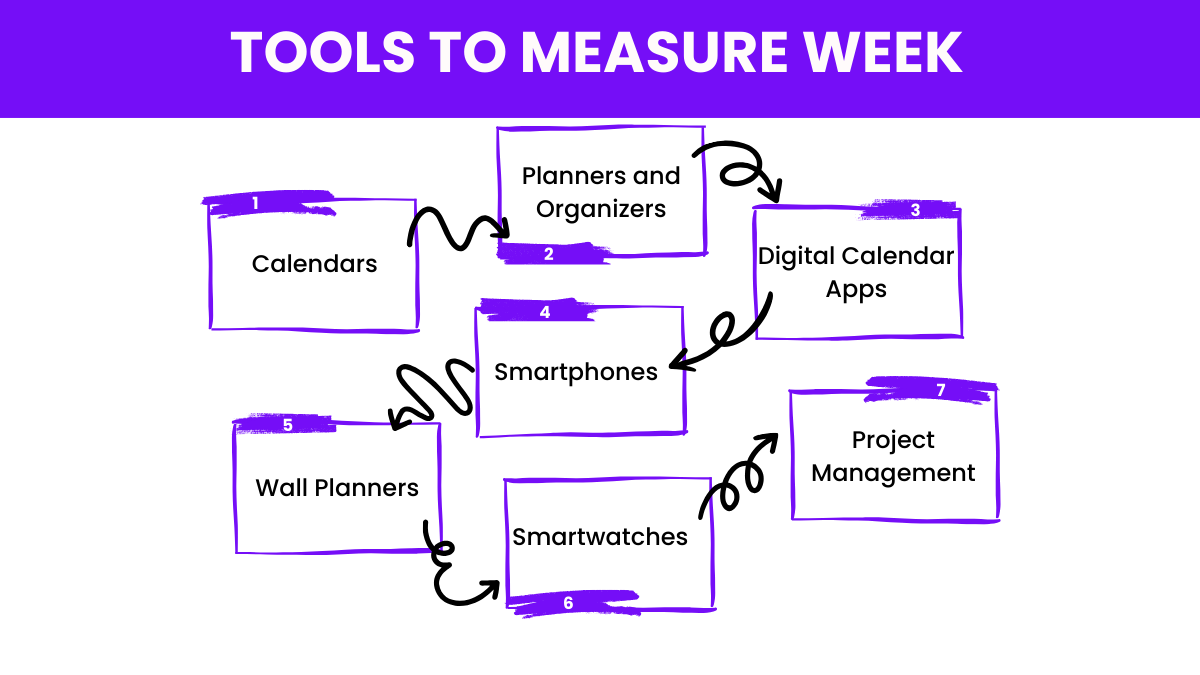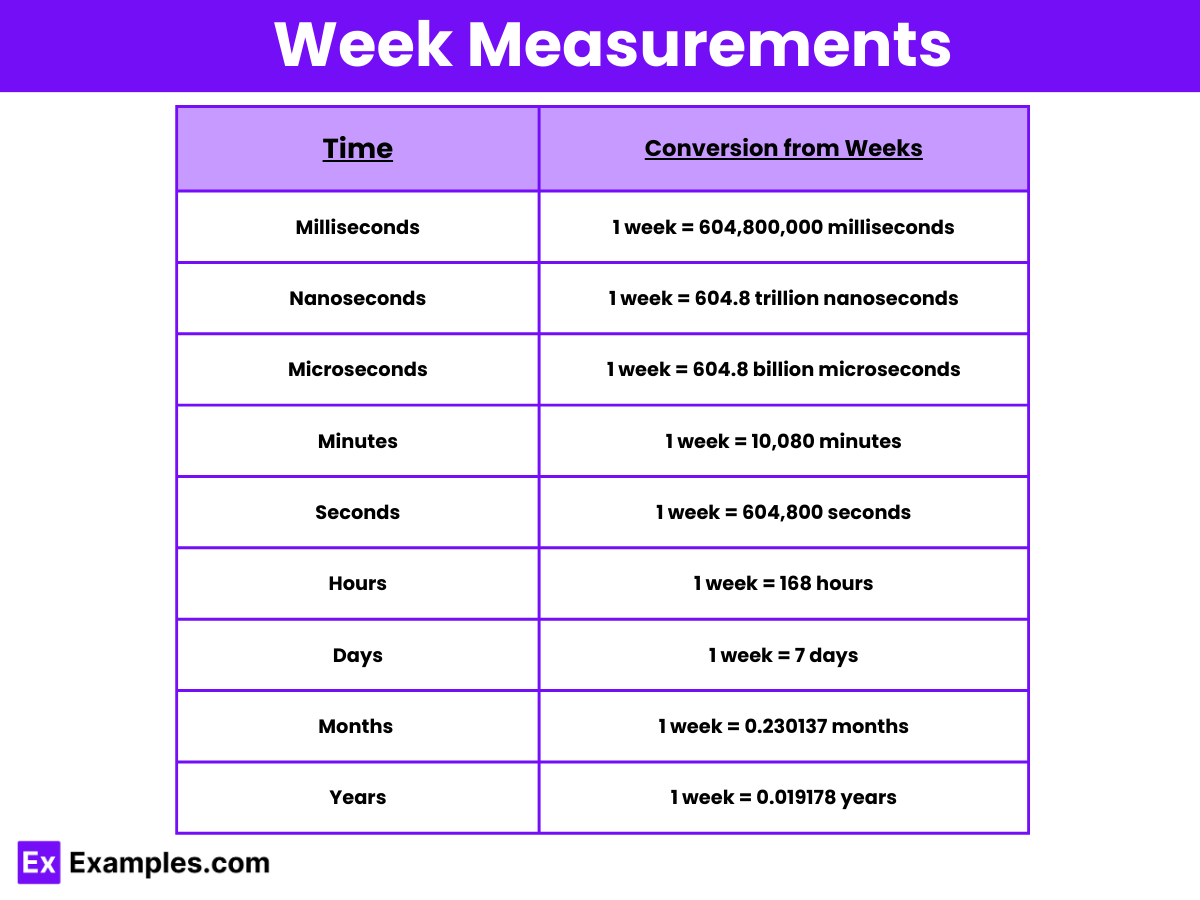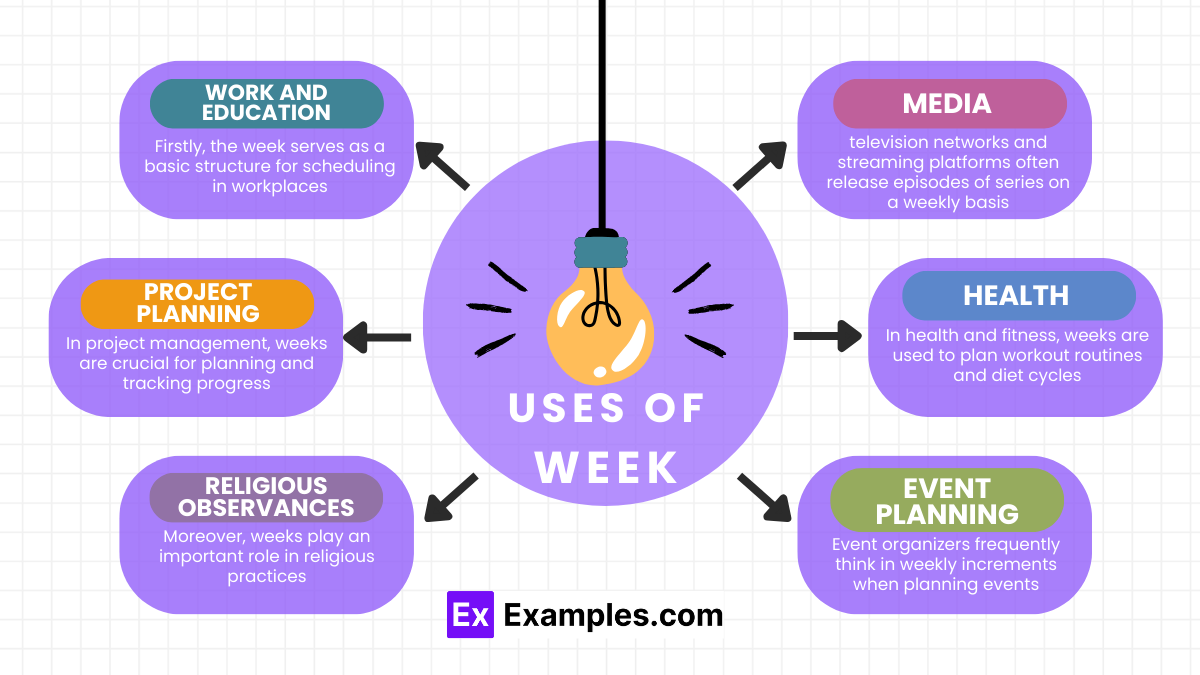What is a week?
5 days
6 days
7 days
8 days


A week is a time unit consisting of seven consecutive days. It serves as a standard measure for organizing days into a larger, repeatable cycle that helps structure activities such as work, school, and leisure. Typically, the week begins on Sunday and ends on Saturday, although this can vary by cultural and regional preferences. Weeks are used universally in planning and scheduling, dividing the month into smaller, manageable segments, and facilitating weekly appointments and events.
This division allows for systematic scheduling across various aspects of life, including work, education, and social activities. The sequence typically starts on Sunday and concludes on Saturday, although some cultures designate Monday as the first day. Each week provides a framework for recurring events, making it easier to manage ongoing commitments and plan ahead for future engagements. This consistent repetition helps maintain a balanced rhythm in daily life and societal functions.

Measuring a week involves several tools and methods that help in organizing and planning across the seven days. Here’s a look at the tools used:
A standard week consists of seven days, each with its own name and significance. Here’s how they line up:

Here’s a table that provides various conversions from one week to other common units of time:
| Time Unit | Conversion from Weeks |
|---|---|
| Days | 1 week = 7 days |
| Hours | 1 week = 168 hours |
| Minutes | 1 week = 10,080 minutes |
| Seconds | 1 week = 604,800 seconds |
| Milliseconds | 1 week = 604,800,000 milliseconds |
| Microseconds | 1 week = 604.8 billion microseconds |
| Nanoseconds | 1 week = 604.8 trillion nanoseconds |
| Months (average) | 1 week ≈ 0.230137 months |
| Years | 1 week ≈ 0.019178 years |
Understanding how to convert weeks to other units of time is essential for effective project management, scheduling, and personal planning. Accurate conversions help ensure that timelines are understood and adhered to across different contexts. Here’s a straightforward guide to converting weeks to and from other common units of time:

The week is a commonly used unit of time that organizes days into a more manageable structure, facilitating planning and activities across various sectors. Here’s how weeks are utilized, illustrating their significance in daily life and various systems:
Here are some fill-in-the-blank examples related to the concept of a week, followed by their answers separately:
Answers:
Yes, a week is indeed a unit of measurement. Specifically, it measures time, comprising seven consecutive days. Traditionally, it helps organize schedules across various cultural and professional contexts.
Four weeks typically equal one month. However, depending on the month and starting point, four weeks can also be approximately 28 days, fitting neatly into a lunar cycle.
Yes, traditionally, a week is always comprised of seven days. This structure is standardized across most of the world, providing a consistent framework for organizing days and activities efficiently.
Text prompt
Add Tone
10 Examples of Public speaking
20 Examples of Gas lighting
What is a week?
5 days
6 days
7 days
8 days
How many weeks are there in a year?
50
51
52
53
How many weeks are there in 70 days?
9
10
11
12
If you start a project on a Monday and it lasts for 5 weeks, on which day of the week does it end?
Monday
Friday
Wednesday
Sunday
Which of the following is the total number of days in 4 weeks?
28
30
34
54
How many weeks are there in a year, assuming a non-leap year?
52
53
54
55
If a class is held every 2 weeks, how many classes will be held in 12 weeks?
4
5
6
7
Which of the following represents a fraction of a week?
1/3
1/2
1/7
1/5
A project started on a Wednesday and takes 8 weeks to complete. On what day of the week does the project end?
Wednesday
Tuesday
Monday
Thursday
How many weeks are there in 300 days?
42
43
44
45
Before you leave, take our quick quiz to enhance your learning!

